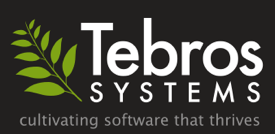Recently I was presented with a XML document containing tabular data that needed to be joined with several Oracle tables in order to produce a report. While there are dozens of ways to go about this, I decided to take the opportunity to learn more about the XMLTable function.
XMLTable takes a XML document and evaluates an XQuery expression on that document outputting a pseudotable of rows. XQuery is powerful extension to XPath that I’ve had the opportunity to work with on a project before (we needed an XQuery processor that runs on Protocol Buffers data at work). This report however didn’t need anything more powerful than a simple XPath expression.
Typically XMLTable is used with a XML document already stored in the database. I wanted to pass the XML document in as a parameter on my query. So I passed in a CLOB, used XMLType to convert it, and used XMLTable to present a tabular data set that I could use to join with other tables in Oracle.
Here’s a bit of example code in Ruby:
require 'rubygems'
require 'oci8'
def make_xml
xml = '';
100.times do |i|
xml += "<row><n>Nathan</n><a>123 Main</a><id>#{i+1}</id></row>"
end
"<rowset>#{xml}</rowset>"
end
sql = "
SELECT
*
FROM xmltable(
'/rowset/row'
PASSING xmltype(:xml)
COLUMNS
name VARCHAR2(50) PATH 'n',
address VARCHAR2(50) PATH 'a',
account_id INTEGER PATH 'id'
)
"
conn=OCI8.new('scott', 'tiger', 'testdb')
cursor = conn.parse(sql)
cursor.bind_param(':xml', OCI8::CLOB.new(conn, make_xml()))
cursor.exec()
while r = cursor.fetch()
puts r.inspect
endAnd now my XML document is a joinable pseudotable.
